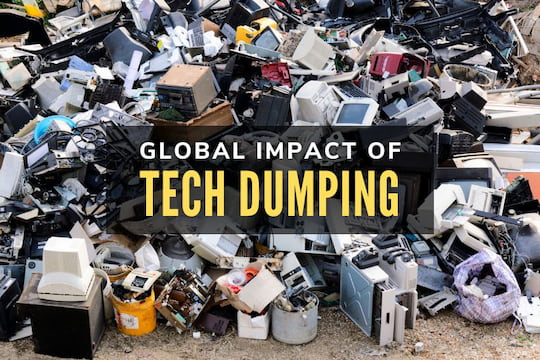With the growing amount of E-Waste that is landing in US landfills and landfills throughout the world, there have been more and more movements geared toward educating the public about the adverse effects of E-Waste. This includes the amount of space that is being taken up by e-waste, the precious metals that are being lost, and the amount of energy we could be saving as a country if we were to recycle e-waste instead. Another adverse effect of e-waste that is important not to forget is the hazardous repercussions that come from it. Most electronic items from cell phones to old computers contain trace amounts of dangerous chemicals that can be harmful to the environment and humans. Here is a closer look at what is the importance of e-waste recycling and what makes it so harmful when not properly recycled.
.jpeg)
Lead and mercury are some of the most common hazardous materials that are found in e-waste, though there are many more than that. Though lead is the fifth most widely used chemical after iron, aluminum, copper, and zinc, it is also hazardous. Just from short-term exposure to high levels of lead, a person will experience convulsions, vomiting, diarrhea, coma or even death. Other symptoms also include abdominal pain, appetite loss, fatigue, constipation, irritability, sleeplessness, and headache. Lead exposure is also particularly dangerous for young children since it can cause damage to the nervous connection and even cause blood and brain disorders. While mercury is a metal that is widely used for producing electrical and electronic products, it is also one of the most toxic metals. Mercury can cause liver and brain damage when inhaled or ingested. Other hazardous materials found in e-waste include arsenic, barium, beryllium, cadmium, chromium, dioxins, polychlorinated biphenyls, polyvinyl chloride, and selenium. Some of the effects of these hazardous materials include skin diseases, lung cancer, brain swelling, damage to the heart, muscle weakness, fever, chills, skin cancer, eye injury, impairment of immune system, and respiratory problems to name a few. When e-waste is not recycled correctly, these hazardous materials can sink into the land and contaminate water supplies. This is why it is crucial always to recycle e-waste.




.jpg)















